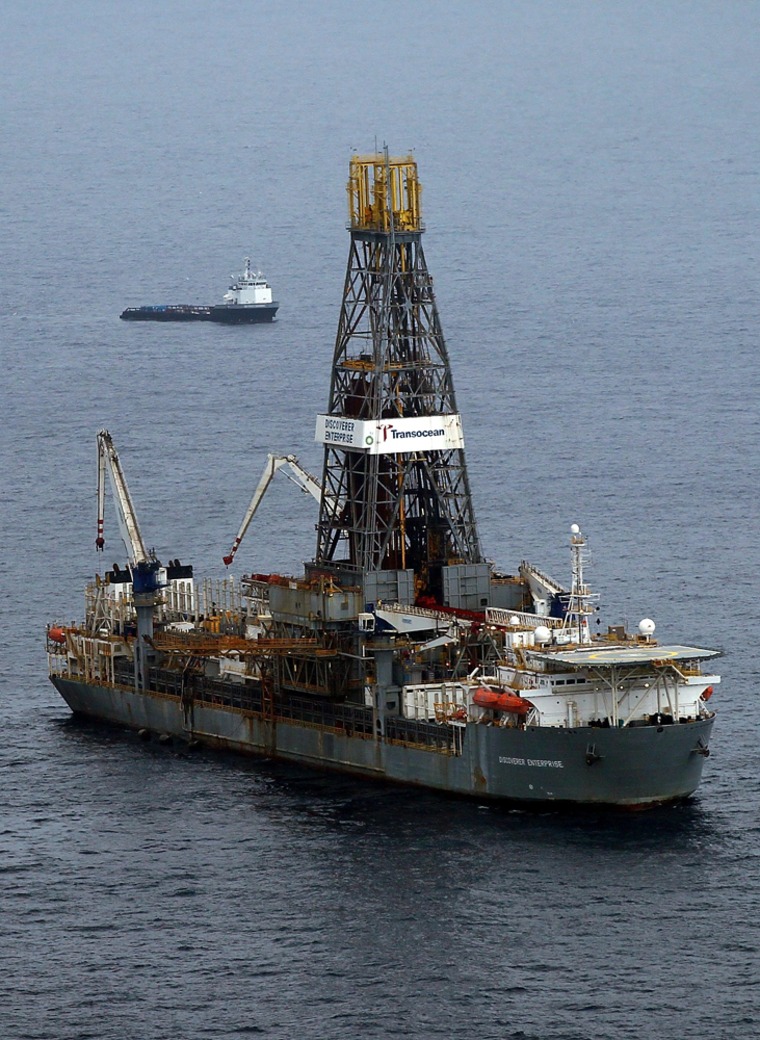Ending days of uncertainty, the incident chief for the busted BP well said Friday that BP experts and government scientists agree a relief well needs to be finished to completely kill the busted well, but just how to do so is still being discussed.
"Everybody's in agreement we need to move ahead with the relief well; the question is how to do that," National Incident Commander Thad Allen told reporters.
"I'd like to give you a definitive answer," he added, "but it's a work in progress."
BP had thought the mud and cement pumped in from above the leak may have essentially killed the well. But the relief well will allow engineers to pump in mud and cement from below in a "bottom kill" attempt to permanently seal the well.
Work on the wells was stopped this week because of bad weather.
The decision to resume work on the relief wells means a key milestone in the crisis that wreaked havoc on the Gulf Coast's economy and ecosystem remains several days off.
However, Allen has repeatedly insisted on an "overabundance of caution" when it comes to permanently plugging the well.
Pressure tests completed late on Thursday showed that the well is effectively sealed, with "no communication with the reservoir," Allen said.
But engineers are worried that increased pressure from the "bottom kill" could damage the existing temporary cement plug and perhaps cause about 1,000 barrels of oil trapped in the well shaft to flow into the ocean, Allen said. Engineers are developing procedures to allay such concerns, he said.
After Allen gives the order to continue with the relief well, it will take about 96 hours to drill into the Macondo well shaft and perhaps days beyond that to complete the job, he said.
On Thursday, Allen had said it was possible that the "bottom kill" would not be necessary.
It would have been difficult to say the "bottom kill" was unnecessary after promising it for weeks as the ultimate solution, said Eric Smith, associate director of the Tulane Energy Institute.
"That's been the mantra all along, that they wanted to do the bottom kill," he said.
Proceeding with the relief well makes sense, said Bob Bea, a petroleum engineering professor at the University of California, Berkeley, who is conducting his own investigation into the disaster.
Too little is known about how much cement might be inside the space between the inner piping and outer casing to be confident the well is permanently plugged, he said.
"Everything we know at this time says we need to continue the work with the relief wells," he said. "We don't know the details of how they plugged the well from the top. We don't know the volume of material they put in the well bore, and without that we can't tell how close to the bottom of the well they got."
Drilling of the first relief well began in early May. Since then, the drill has been guided some three miles from the surface and two miles beneath the sea floor to within 30 to 50 feet of the target. The drill is about as wide as a grapefruit, its target less than half the size of a dartboard.
It's unclear when the drilling could be finished. Officials had projected as early as Friday before the nasty weather forced the operation to a halt. Drilling that final stretch is a time-consuming and careful process as engineers work to make sure they don't miss.
Crews dig about 20 to 30 feet at a time, then run electric current through the relief well. The current creates a magnetic field in the pipe of the blown-out well, allowing engineers to calculate exactly where and how far they need to drill.
The flow of oil into the Gulf has been halted since July 15, when a temporary cap over the well was able to contain the spill. But officials have stressed for weeks that only a bottom kill will ensure the well is no longer a danger.
Before July 15, the oil leaked almost unimpeded for nearly three months and spewed some 206 million gallons of oil, according to the government's latest estimate. The crisis began on April 20, after an explosion on the BP PLC-leased Deepwater Horizon drilling rig that killed 11 workers. Officials don't yet know the cause of the explosion, or why machinery designed to prevent the unchecked flow of oil failed to work.
BP has already spent $6.1 billion responding to the spill.
